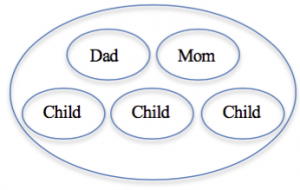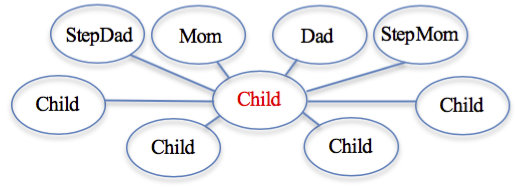Jonathan Smith is the President of MBS, Inc. and the Director of Technology at Faith Ministries in Lafayette, IN.
He is an author and frequent conference speaker.
You can reach Jonathan at jonathans@mbsinc.com and follow him on X @JonathanESmith.
Copyright © 2025 Jonathan Smith. All Rights Reserved.
© 2015 by Nick B. Nicholaou, all rights reserved President, Ministry Business Services, Inc. Reprinted from MinistryTech Magazine
There’s no doubt that family structures have changed dramatically in the last forty years. ChMS databases are struggling to cope with those changes, and that makes ministry more challenging because most ChMSes impose traditional family structures on today’s family structures. A change must be made! Here are some thoughts that may help.
Our Culture Has Changed
Up through the 1960s and into the 1970s, most family structures were more traditional than they are today. Divorce was rare and even scandalous! Blended families tended to happen more because of widows and widowers getting married than for any other reason, and the percentage of those occurrences was low enough to not challenge the thinking of database structures.
But that has definitely changed! 2015 U.S. Census Bureau statistics show what we all see around us: intact traditional families are in significant decline, and children raised by a parent who has never been wed or is divorced is significantly increasing. This is true in The Church too, something we couldn’t imagine forty years ago! The result is that when ChMS databases insist on using traditional family structures, serving children and their parents in churches with large children’s ministries becomes operationally very challenging.
Most ChMS Databases Don’t Cope Well
Most ChMSes are built around the traditional family structure (two parents of differing genders who have their children in the home together) with methods to connect people beyond those traditional immediate family roles (grandparents, etc). So a person’s database record wants to put them in one of those traditional roles and may look something like this:

Any relationships outside of that family structure are treated as somewhat unusual, and merely accommodated. But consider, for example, a child of divorced and remarried parents who each have custody. Maybe the shared custody is of the third child from the first family, and Dad’s new family also has two more kids with the child’s StepMom. It might look like this:

Which family should you put the child in? What if both parents are involved in the same church, and the child might come to church with either one? And what if you use your ChMS’s security check-in solution? It all gets very complicated.
A Thought on How They Can Change
This is a situation I see many churches wrestle with when they’re looking for a new ChMS solution. It struck me in a recent consultation that the answer might be to change the database structure so that each record is of an individual with links to other records in the database, and each link ‘type’ would carry with it appropriate business rules and functionality. Maybe it would look a little like this:

I don’t pretend to be a a programmer, and I don’t know what the programming implications of this different type of structure are. But if ChMS databases are to be relevant in today’s complex family structures, a change of this magnitude seems necessary.

